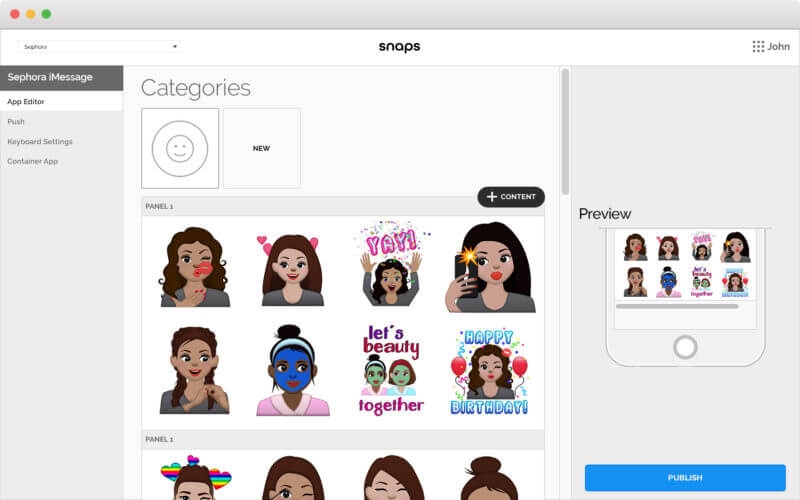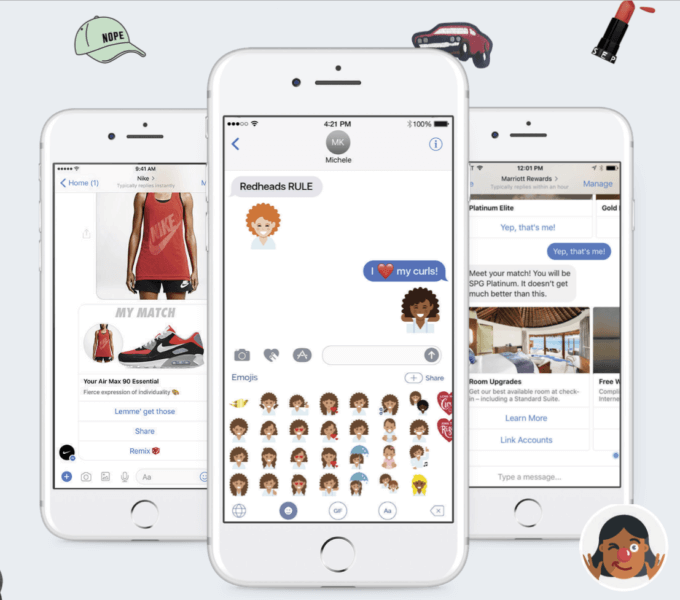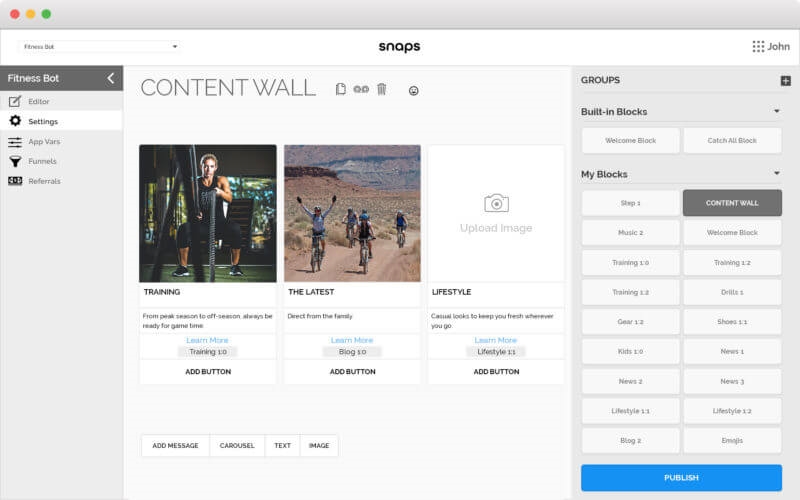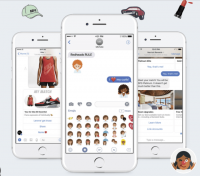Snaps launches a Marketing Cloud for chatbots, messaging and emojis
New York City-based company is offering a self-service platform so marketers can target users with automated conversations.

Last week, Sprout Social announced a do-it-yourself bot creation platform for Twitter.
This week, Snaps has released its self-service Conversational Marketing Cloud, which lets marketers create chatbots, emoji keyboards and custom iMessages.
The platform has been in beta testing with selected brands — including Nordstrom, Nike Jordan and Marriott Rewards — for the last year by the New York City-based Snaps (not to be confused with Snap, parent company of Snapchat). Here’s a screen for the creation of automated iMessage responses from the Sephora brand:
Founded in 2011, Snaps initially released an augmented reality consumer app, then developed an emoji keyboard where messaging app users could attach branded emojis to their communications.
It also created custom iMessage apps — where stickers or videos are employed for gift cards and other shareables — and what it says was the first chatbot for messaging app Kik. Snaps points to its history of creating messaging experiences of one sort or another for more than 120 brands, including L’Oreal and BudLight.
Snaps Director of Business Development Jonathan Shriftman told me his company’s new platform is “the most comprehensive platform for brands in mobile messaging,” encompassing brand conversations via chatbots and peer-to-peer communications through iMessages and emoji.
In fact, just as Sprinklr now sees its social media management platform as a customer experience marketing cloud focused on social management, so Snaps sees its new offering as a marketing cloud focused around automated conversations and peer-to-peer messaging.
The chatbots can be created without a developer, and then deployed to a variety of platforms, including iOS, Facebook Messenger, Slack, Android, Amazon Alexa, Google Home, Kik, Siri and Google Assistant. While coding is not required, brands can employ developers to extend or customize the platform.
The chatbots can utilize buttons to guide user replies, similar to Sprout Social’s approach.
Or they can use natural language processing of users’ text conversations, via one of several partnered intent engines (Wit.AI, Microsoft LUIS and IBM Watson among them) that transmit the intent of the conversation to a dialog manager. And here’s a screen for the creation of a fitness-related chatbot:
The intent designation can channel the message flow, such as a user message relating to customer service being sent to a block of responses for customer service, or a request to book a hotel room sent to the path for room booking.
The brand’s data can then be pulled via an API, like info about the availability of a hotel room or customer info from a brand’s customer relationship management system. There are also prebuilt authoring templates to guide the marketer’s chatbot creation.
Targeting capabilities include the ability to generate user segments based on behavior and profile attributes, including data gleaned from Facebook profiles or pulled from data management platforms. This can help to direct users into specific conversational paths, and prebuilt templates are in the works that are oriented around re-engagement, such as using rules-based notifications based on location or weather.
A Snaps tracking pixel can be employed for retargeting, marketers can do A/B tests with multiple chatbot conversational flows, and analytics can track engagement, conversions and other common metrics.
Compared to competing conversation-creating platforms, Shriftman pointed to the range of enterprise-oriented capabilities in this Cloud. They include the ability to write once/publish in many places, utilization of outside customer data from CRMs or a data management platform and integration with outside natural language processing/intent engine partners.
Marketing Land – Internet Marketing News, Strategies & Tips
(100)








